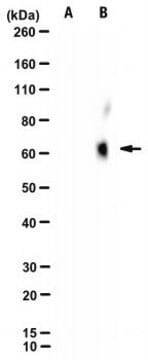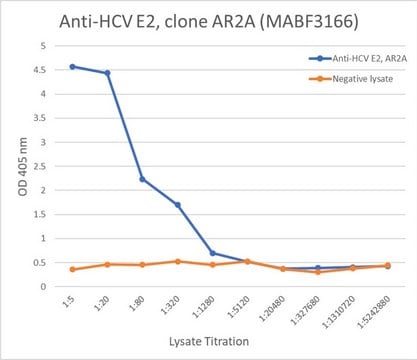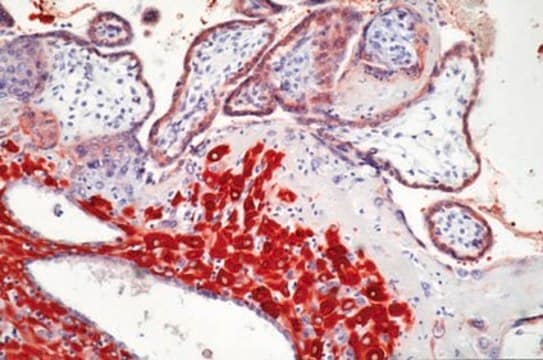MABF3165
Anti-HCV E1E2 Antibody, clone AR4A
Synonym(e):
Genome polyprotein;Envelope glycoprotein E1E2
About This Item
Empfohlene Produkte
Biologische Quelle
human
Qualitätsniveau
Antikörperform
purified antibody
Antikörper-Produkttyp
primary antibodies
Klon
AR4A, monoclonal
Mol-Gew.
calculated mol wt 327.15 kDa
Aufgereinigt durch
using protein G
Speziesreaktivität
virus
Verpackung
antibody small pack of 100 μg
Methode(n)
ELISA: suitable
immunoprecipitation (IP): suitable
neutralization: suitable
Isotyp
IgG1
Epitopsequenz
N-terminal half
Protein-ID-Hinterlegungsnummer
UniProt-Hinterlegungsnummer
Lagertemp.
-10 to -25°C
Posttranslationale Modifikation Target
unmodified
Angaben zum Gen
vaccinia virus ... E2(684)
Allgemeine Beschreibung
Spezifität
Immunogen
Anwendung
Evaluated by ELISA in lysate from HEK293T cells transfected with H77E1E2.
ELISA Analysis (ELISA): Envelope glycoprotein E1E2 was detected by ELISA in various dilutions of lysates from HEK293T cells transfected with H77E1E2, but not in lysate from untransfected cells.
Tested Applications
ELISA Analysis: A representative lot detected HCV E1E2 in ELISA applications (Giang, E., et al. (2012). Proc Natl Acad Sci USA. 109(16):6205-10).
Immunoprecipitation Analysis: A representative lot immunoprecipitated HCV E1E2 in Immunoprecipitation applications (Giang, E., et al. (2012). Proc Natl Acad Sci USA. 109(16):6205-10).
Neutralizing: A representative lot of this antibody neutralized several HCV isolates (Giang, E., et al. (2012). Proc. Natl. Acad. Sci. USA. 109(16):6205-10).
Note: Actual optimal working dilutions must be determined by end user as specimens, and experimental conditions may vary with the end user.
Physikalische Form
Rekonstituierung
Lagerung und Haltbarkeit
Sonstige Hinweise
Haftungsausschluss
Not finding the right product?
Try our Produkt-Auswahlhilfe.
Lagerklassenschlüssel
12 - Non Combustible Liquids
WGK
WGK 2
Flammpunkt (°F)
Not applicable
Flammpunkt (°C)
Not applicable
Analysenzertifikate (COA)
Suchen Sie nach Analysenzertifikate (COA), indem Sie die Lot-/Chargennummer des Produkts eingeben. Lot- und Chargennummern sind auf dem Produktetikett hinter den Wörtern ‘Lot’ oder ‘Batch’ (Lot oder Charge) zu finden.
Besitzen Sie dieses Produkt bereits?
In der Dokumentenbibliothek finden Sie die Dokumentation zu den Produkten, die Sie kürzlich erworben haben.
Unser Team von Wissenschaftlern verfügt über Erfahrung in allen Forschungsbereichen einschließlich Life Science, Materialwissenschaften, chemischer Synthese, Chromatographie, Analytik und vielen mehr..
Setzen Sie sich mit dem technischen Dienst in Verbindung.







